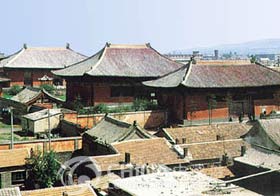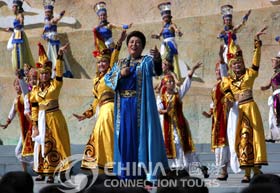 Datong is the second largest city in Shanxi Province. It is known for its coal mines, power stations and huge locomotive factory. Anciently Datong was the capital city of two non-Han Chinese dynasties. Many ancient sites are located in the area. Datong is an up and coming tourist city.
Datong is the second largest city in Shanxi Province. It is known for its coal mines, power stations and huge locomotive factory. Anciently Datong was the capital city of two non-Han Chinese dynasties. Many ancient sites are located in the area. Datong is an up and coming tourist city.
Geographic Features
Datong is located near the border of Inner-Mongolia. The city is surrounded by mountains, and the Yu River crosses it from north to south. The climate is dry and windy, and the temperature varies greatly between day and night. The city has a frost-free period of only 125 days a year. It has an average annual temperature of 6.4 C (38F), and an average annual rainfall of 400-500 millimeters.
People
 Datong has a population of 926,000, mainly Han, Mongolian and Hui. The religion is Buddhism and Taoism. The natives speak Shanxi dialect, but the government language is Mandarin.
Datong has a population of 926,000, mainly Han, Mongolian and Hui. The religion is Buddhism and Taoism. The natives speak Shanxi dialect, but the government language is Mandarin.
History
Because of its location Datong serves as a hub of communications between neighboring provinces. As far back as the Neolithic Age, about one hundred thousand years ago, people were living on both sides of the Datong Basin and on the plain on both sides of the Sanggan River. Anciently Datong was important militarily and over the centuries changed hands several times. In the Spring and Autumn Period, the Beidi nationality lived in Datong, and during the Warring States Period, it belonged to Yanmen Prefecture of the Zhao State. It was the capital of the Northern Wei Dynasty (386-534AD). Although that was a period of warfare in northern China, Datong prospered. In 907 AD, a second period of greatness came with the arrival of the Mongol Liao Dynasty, which made Datong its capital.

